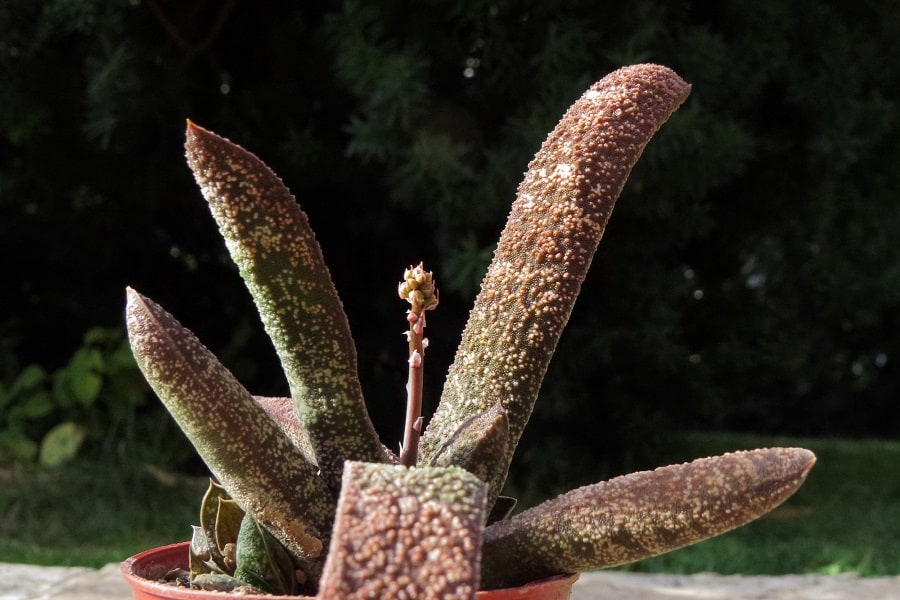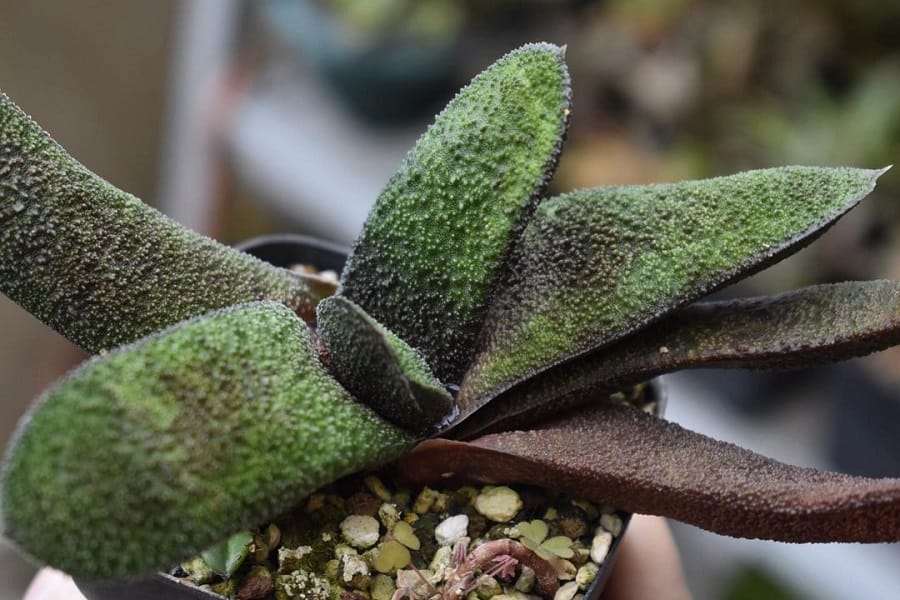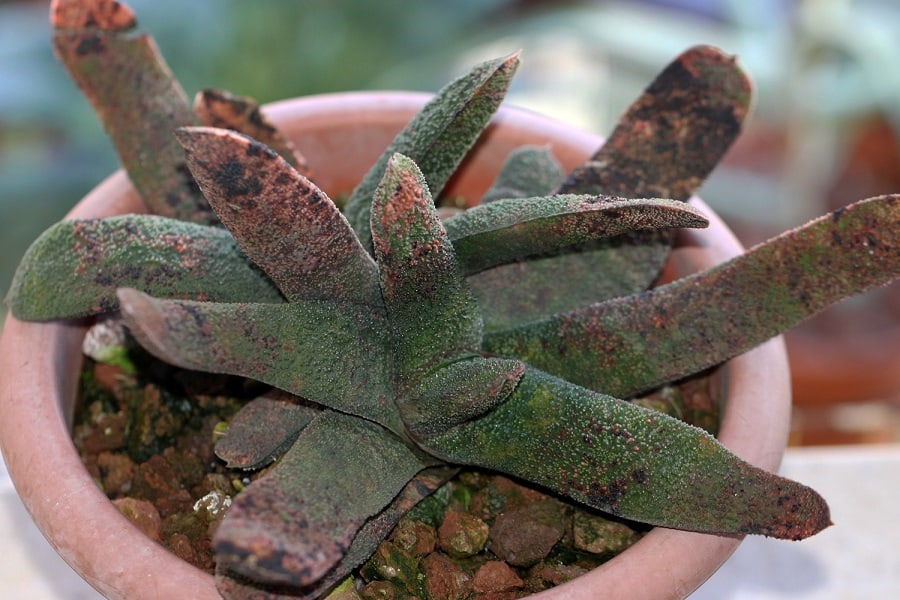Gasteria batesiana 101: Everything You Need to Know (and More!)
Are you captivated by the striking beauty of succulents? If so, you’ll love learning about the Gasteria batesiana, a fascinating South African gem! With its rough, pointed leaves forming a striking rosette and adorned with spotted bands or stripes, this succulent is sure to steal your heart. But that’s not all – the Gasteria batesiana boasts a range of species, including one with almost entirely black leaves, earning it the nickname “Knoppies gasteria.” Get ready to dive into the world of this incredible plant!

Related Post:
8 Types of Gasteria Succulents With Pictures
Contents
Caring for an Gasteria batesiana
Caring for the Gasteria batesiana is a breeze, making it an excellent choice for both experienced and novice plant enthusiasts alike. Let’s explore the essentials for keeping your Gasteria batesiana thriving:
Light Requirements
While the Gasteria batesiana can tolerate shade better than many other succulents, it still craves bright, indirect light. If growing it indoors, place it near a well-lit window or consider using grow lights for optimal illumination. Outdoor plants should receive semi-shade, avoiding direct sunlight throughout the day. When introducing your Gasteria batesiana to brighter conditions after its dormant period, gradually acclimate it to prevent burning.
Water Needs
Moderation is key when it comes to watering your Gasteria batesiana. Allow the soil to dry out completely between waterings, typically every 10-15 days during the summer months and once a month or less in winter. Overwatering can lead to root rot, so exercise caution and let the soil guide your watering schedule.

Soil Preferences
This succulent thrives in well-draining, porous soil that quickly sheds excess moisture. You can purchase a premixed succulent soil blend or create your own by combining potting soil with peat, sand, perlite, and limestone. Ensure the pot has ample drainage holes to prevent water accumulation.
Temperature and Humidity
The Gasteria batesiana is well-equipped to handle heat and humidity, with a minimum temperature tolerance of around 40°F (4°C). In warmer weather, you may notice the leaves taking on a brighter, lighter hue or even blooming with small, colorful sack-shaped flowers.
Fertilizing Needs
During the growing season, feed your Gasteria batesiana every 2-3 weeks with a cactus or succulent fertilizer high in potassium and low in nitrogen. Diluting the fertilizer with water can help provide a slow, controlled release and reduce its intensity.
Repotting
To keep your Gasteria batesiana in top shape, repot it annually in the spring. This succulent generates new roots each year while the old ones die off. The new roots can become tangled with the dead ones, preventing proper water and nutrient uptake. Repotting allows you to refresh the soil and prune away the old root system, reinvigorating your plant.

Pruning
Along with annual repotting, pruning is essential for your Gasteria batesiana’s health. Use a sharp, sanitized knife or pruners to remove any dead or damaged leaves or roots. This practice encourages new growth and keeps your plant looking its best. Pruning also helps manage the size and shape of your succulent as desired.
Pests and Diseases
While generally low-maintenance, the Gasteria batesiana can occasionally face issues with common houseplant pests like mealybugs and aphids. These insects tend to attack when the plant isn’t receiving enough light. If discovered, treat promptly with an insecticidal soap, neem oil, or rubbing alcohol.
Another potential issue is the appearance of small black spots on the leaves. Don’t be alarmed – these spots are harmless and not contagious, often occurring even in healthy plants.
However, if your Gasteria batesiana is in too much shade and overwatered, it may become susceptible to fungal diseases. Combat any fungal infections with an appropriate fungicide treatment. Providing proper light levels and allowing the soil to dry out between waterings is the best defense against disease.
Gasteria batesiana Propagation
Multiplying your Gasteria batesiana collection is easy through propagation. This succulent readily produces offsets or “pups” that can be separated to grow into new plants.
- Identify pups or offsets growing at the base of the mother plant. Look for offsets with their own root systems.
- Prepare for propagation by having a container with well-draining cactus/succulent soil ready.
- Using a clean, sharp knife, carefully separate a pup from the mother plant, retaining as many roots as possible.
- Allow the offsets to callus over for a few days before planting in the prepared soil.
- Plant the offset at the same depth it was previously growing, gently firming the soil.
- Water sparingly until new growth appears, taking care not to overwater.
With a little patience, your propagated Gasteria batesiana offsets will establish themselves as charming new plants!
